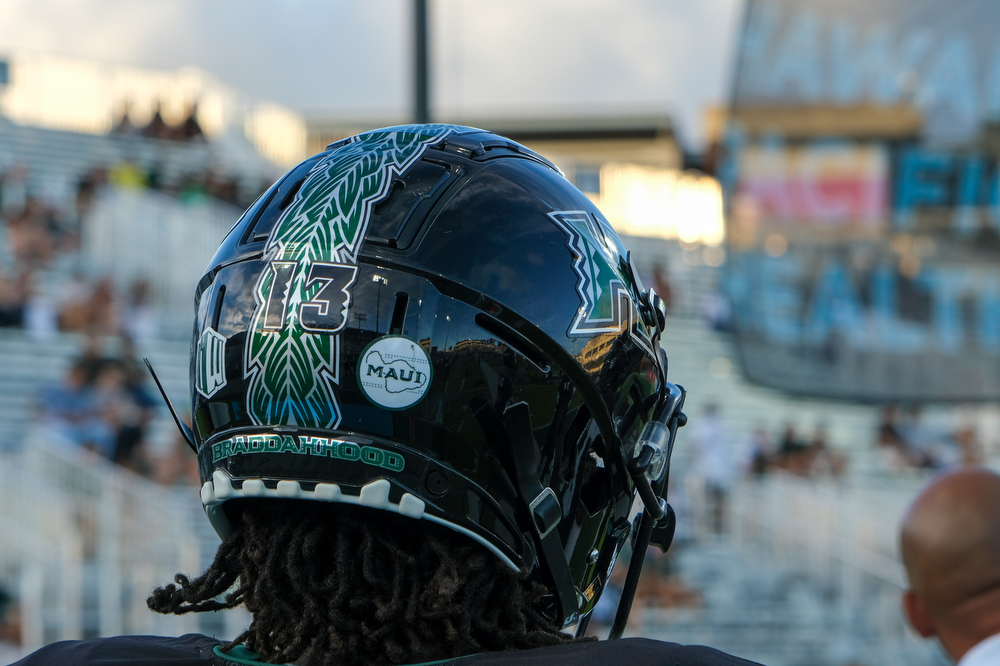When I was young, I had dreams of going to the Olympics for track and field. I wanted to be like Allyson Felix, Jessica Ennis-Hill and Sally Pearson, all phenomenal athletes that worked hard and followed their dreams of one day standing atop an Olympic podium.
I knew training to reach that level would be tough because the 11-year-old me hated running repeat 200s during cold winters. I didn’t realize what it actually meant for those women to have made it as far as they did despite everything they have been through. It wasn’t until I began to endure the mere surface-level of their experiences that it finally hit me what it meant to be a woman in sports.
I have yet to experience motherhood, however, my mind has dealt with the pressures and anxieties of needing to perform in an elite level of competition. My body has seen its fair number of injuries and has been through waves of changes as I transitioned from a young girl into womanhood.
Those are all challenges I have had to deal with internally, and it wasn’t until I entered high school that I began to notice the criticism that came with trying to be a successful woman in a primarily male-dominated environment. From that moment on, I learned that to be a woman in sports is so much more than just being “a woman in sports” and that doesn’t just apply to being a female athlete, either. Now, as a senior in college, and soon-to-be retired collegiate athlete, I am learning what being a woman in sport means and how it carries over to other sides of the industry as well.
In recent years, there has been an active push for equality and representation of female athletes and prominent female roles in sports television. However, when it comes to statistics, numbers don’t lie, and there is still a notable difference between the treatment of men and women in sports media.
It doesn’t take more than a simple Google search to find that of all sports reporters approximately only 20% of them are women, while 80% are men. Women hold somewhere between 10-20% of the total positions in the sports industry, and when it comes to sports coverage, female athletes receive as low as 4-5% of total coverage despite representing over 40% of the participating athletes. The argument for this is that there is a “lack of interest” in female sports, and if there are fewer viewers, there is lesser inclination to cover them.
As a woman who grew up in sports, as an athlete, following sports television and news, and who someday hopes to work in the industry, I have paid attention throughout my life on how women are portrayed. Typically, the media represents us as women first and athletes second, leaving plenty of room for performance-related discussion that is often tied back to our age, fitness, appearance, and our reproductive health.
While it can be normal for those factors to come up when discussing any athlete’s performance whether they be male or female, typically when the discussion surrounds a female athlete, more times than not there will be negative connotations attached.
If NFL player Tom Brady’s level of performance isn’t quite where it usually is on game-day, rarely will you hear someone suggest how it might be time for him to retire because he is old and just not as good as he used to be, especially since becoming a father. Instead of receiving sexist judgment for being selfish by balancing both roles as a professional athlete and a parent, Brady is praised and deemed a heroic parent because he is also a legendary athlete. No one questions his lack of presence in his children’s life and thus he endures no repercussions in the media.
If there is any mention, he is automatically forgiven because he is a professional male athlete. Besides, it is his global super-model-combined-singer ex-wife’s responsibility to be the primary caregiver anyways because she’s the mother, and if she’s stepping back from her career to fulfill the parental duties then why should he? Don’t get me wrong, Brady’s talents are phenomenal, but the point is he will never face that double-standard from the media that a woman athlete experiences.
Allyson Felix, now 37, is one of the most decorated female track and field athletes in history. Prior to her retirement she gave birth to her daughter while still pursuing her athletic career. After having her daughter and suffering life-threatening complications throughout her pregnancy, Felix took the time she needed to get herself back in shape, and 10-months later she was part of Team USA’s mixed 4x400m relay that smashed the world record and won gold at the 2019 World Championships in Doha.
Prior to this incredible achievement, many within the industry were quick to suggest she could no longer handle the training or the lifestyle after studying her racing leading up to the championships. That she perhaps looked a little tense, or off her typical form during a race. There was talk of how motherhood was wearing her down and how her weight had shifted since pregnancy. Some suggested that she should be home nurturing her child because now that she has chosen to become a mother, that is solely her responsibility.
Zero praise was directed toward her efforts of balancing and combining the lifestyles of motherhood and a career, or how she put her body through hell to bring life into the world before deciding to return to her sport and serve as an inspiration to her daughter. Instead, her decision to become a mother as a professional athlete ended her decade-long partnership with Nike. The sports apparel company wanted to pay Felix 70% less than before she became a mother, solely due to the fact that she had given birth since her last contract renewal, and thus might not perform as well as before.
“If we have children, we risk pay cuts from our sponsors during pregnancy and afterward,” Felix wrote in her own opinion article published by the New York Times. “It’s one example of a sports industry where the rules are still mostly made for and by men.”
Sure, women bear children, hence they experience more physical changes in their bodies than men, but the majority of female athletes-turned-mothers also return to their sports with more motivation. Psychologically, the decision to return and get back to where they were before inspires them to train even harder. Thus the psychological benefits of having children can in fact produce stronger individuals, as revealed in a study on pregnancy and motherhood in an elite sport.
However, this positive connotation is never talked about unless a woman herself brings it up, but with a scarce amount of women having roles in the sports media industry, it is another aspect we rarely hear about.
How come no one talks about the sheer athleticism it takes for a woman who has dedicated 9-months of her life to bearing a child then giving birth and returning to her high-level professional sports career? That is a level of physical and mental strength very few ever come close to achieving.
On the other end, we can also discuss “Abortion Doping”, a method allegedly exercised by the former Soviet Union and East Germany that involved intentionally impregnating female athletes as young as 14 by coaches or other team staff members for performance enhancement purposes, and then terminating the pregnancy later on.
One article revealed that in the early stages of pregnancy, a woman’s body generates a natural surplus of red blood cells that can transport rich amounts of oxygen-carrying hemoglobin to supply the fetus’ development, which can improve muscle abilities by upward of 30%. It was discovered that falling pregnant 2-3 months ahead of a competition and then aborting a few days prior could lead to as much as a 10% performance enhancement.
Although this is a method that is difficult to prove, the benefits are presented and prove tempting results should this doping method be used. It is also worth noting that there is often some truth to rumors existing. Nevertheless, this is another angle of women in sport that points to abuse and severe mistreatment of female athletes.
Physical appearance is another topic the media seems to discuss insensitively with little discretion. It is something I have experienced firsthand from years of participating in track and field, a sport where female athletes typically compete in very little clothing and have every curve of their body displayed for millions around the world.
I have experienced the remarks people, often adults, make about young girls in particular and their developing bodies. Not to forego how much publicity the topic of body-issues generate in the media. I firmly believe you won’t meet a female athlete who hasn’t been subjected to some sort of criticism in regard to their physical appearance. We are either deemed too muscular that we are unattractive to the male gaze, or we are too skinny and flat, and sometimes, just too fat.
In the female gaze our eating habits are followed closely, glorifying disordered eating and disregarding the severe damage this has on our health. Women are celebrated in mass media by fueling myths about them and inventing insecurities. God forbid we have stomach rolls that protrude through our uniform.
Imagine having one bad image snapped out of hundreds that highlights every insecurity you could possibly have about yourself, is then used and exploited by media outlets for clickbait and laughs. Do you think for a second there was any positive mention of performance that came with the distribution of said image?
Apparently the majority of girls get slower and bigger as they develop into their womanly figures. Instead of embracing our new bodies that will someday allow us to create new life, we’re taught to cover up and constantly work for a more visually appealing figure.
“Look at the cellulite on the back of her thighs, you can tell she won’t be running even remotely close to the times she ran last year,” I had a former coach say to me one year.
At the fragile age of 16, that same coach, who at the time I respected immensely, told me that I was carrying too much “puppy fat” after being out injured for a few weeks. My weight hadn’t shifted at all, and at that age I was all skin and bones, but that didn’t matter because the moment he said those words to me, I never looked at myself the same way again.
In 2019, The Daily Telegraph published an article about how a number of leading British female athletes had been fat-shamed by their coaches. Many claims surrounded former British senior coach, Charles van Commenee, in the run-up to the 2012 Olympics. In 2011, van Commenee made remarks about Britain’s 2012 poster-girl Jessica Ennis-Hill being overweight prior to her participation in the London games. Though Ennis-Hill went on to win gold in the heptathlon in London, the comments were enough to affect her to the point where her coach had to seek advice from a sports psychologist.
American middle-distance runner, Mary Cain, was verbally abused by her coach, Alberto Salazar, to the point where she stopped menstruating for three years and broke five bones after developing osteoporosis as a result of not eating enough.
The ideology of how female athletes are supposed to look, even from a young age, stems from and is disgracefully fueled by the media. Because sports are male-dominated, society has been indoctrinated to view female athletes through the male gaze, despite there being literal biological differences that set males and females apart. Instead of praising each sex separately for their individual abilities, we are influenced by the media, and ultimately by patriarchy, to view one as being inferior to the other because of these biological differences.
After the 2023 Women’s March Madness tournament, there was immense talk in the media about words exchanged between LSU’s Angel Reese and Iowa’s Caitlin Clark. The media attempted to pit the two players against each other, but ultimately the women saw through this stunt and defended one another. This was a clear-cut example of the media searching for a moment of hysterics to blow up. Unfortunately, the attention generated from the interaction took away the focus of an impressive game of high skill and female athleticism.
One positive aspect that comes from the demand for equality for female opportunity in general is that many doors have been forced open, and companies are now required to have a certain percentage of women on their teams and in the media, and rightfully so. However, one narrative that should be challenged is that women will always have to work twice as hard as any man to prove themselves. The onus is on women to change existing sexist stigmas that continuously frame the image of women in sports.
Unless we are able to change that narrative, women will continue to be misrepresented and treated unfairly in sports. I think it is high time that we start praising our female athletes and women in sports media for who they are, recognizing what they do, and commending their drive to go up against mountainous loads of criticism and stigmas.






